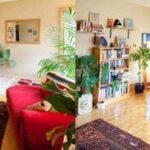Introduction
Feng Shui is an ancient Chinese concept that seeks to use energy forces to improve the lives of those living in a particular space. It is believed that by creating harmony and balance between the energies of the environment and individuals, one can live more comfortably and better their life. To bring Feng Shui into your home or office, there are some universal tips you should consider.
The first tip is to clear any clutter from your space, as excess objects produce chaos and unease. Clearing away items that hold negative energy can help keep all energies harmonious in the home or office.
second important aspect of Feng Shui is lighting- it should be bright enough for comfort but not too dim where the atmosphere feels dull. Expression can also be added with plants, art pieces, virtual water features, wind chimes etc – anything that brings beauty or a sense calmness to the space can positively contribute with its creative expression through each element (wood, fire, earth, metal and water).
Finally, having proper energy flow between all areas inside – such as bathrooms and bedrooms – by installing airwells or windows for cross ventilation will ensure a balanced home; invigorate spaces which may contain stagnant energy; increase airflow providing oxygenation; reduce dust particles; produce a calming feeling from gentle breezes throughout the apartment/house and finally make sure freshness/airy feeling keeps circulating.
Benefits of Feng Shui DIY
Feng Shui DIY is a great way to improve productivity and relaxation in the home. By strategically placing various Feng Shui items throughout the home, a desired atmosphere can be created. The goal of Feng Shui is to create a balance between energy and elements in order to create a harmonious environment.
Items such as plants, artwork, furniture, and even colors can be used to help achieve this balance. By placing items that represent the five elements (wood, fire, earth, metal and water) throughout the space, it will encourage positive energy flow around the room. Plants can have representation from all elements and bring positive vibes into any space due to their natural properties. Neutral colors like dusty blues or greens may also be used for calming effects of one’s environment. Additionally, charming artwork can give off good feelings as well as draw attention away from awkward spaces or corners in any room. On another note, Furniture placement is very important in order for proper energy flow throughout a space; away from doorways or staircases but towards areas you want people to focus their attention on such as workspaces or television areas if applicable.
By using Feng Shui principles while creating your DIY project at home you will be able to bring more order and clarity into your living space resulting in improved productivity and relaxation overall.
Evaluating Your Space
Evaluating your space is the first step in creating a feng shui diy. Before making any changes, it’s essential to look at the layout of the space and identify any energy blockages. Start by looking around the room and noting its physical characteristics, such as furniture placement, lighting, colors, and textures. You should also take note of how you feel when you enter the room—is the energy heavy or uplifting?
Next begin to assess any possible energy blockages that may be present. Common areas to focus on include doorways or hallways that feel blocked or crowded, clutter that has no designated place, or furniture placed up against a wall in ways that may be disrupting Chi (the natural flow of energies). Clutter can be especially damaging as it “begs” for attention from positive Chi energies. In addition, large pieces of furniture can block access to windows which allow the entry of sunlight and fresh air — both associated with bringing joy into the home.
Once these elements have been identified there are several solutions for addressing them — rearranging furniture so that pathways are opened up, dedicating specific storage areas for items without a home, hanging mirrors strategically so they can redirect energy flow away from doorways or overly clustered areas — all while taking care not to create new blockages in other areas. Solutions like these will open up channels for positive energy movement and bring balance back into your space!
DIY Feng Shui Color Choices
East: Green, blue, and purple are the colors used to achieve a balance of energy in this area of the home. These colors are associated with prosperity, luck and good health.
South: Red, pink and orange are used to energize and bring warmth into this area of the home. They symbolize enthusiasm, passion and romance.
West: Shades of yellow like lemon, light yellow and amber symbolize communication, creativity and wisdom in Feng Shui.
North: White, grey or black represent career ambition and represent stability. As areas for productivity tend to be located in this part of the home, calm and neutral tones blended with warm hues have been found to work best.
DIY Feng Shui Mirrors
To create a Feng Shui-friendly space using mirrors, it is recommended that the reflective surfaces are placed in certain locations or directions within the room. For example, in bedrooms, small mirrors can be placed on either side of the bed to bring energy and vitality into the room. Mirrors should also be hung facing windows or doors to invite abundance and wealth inside, but avoid placing mirrors directly across from windows or doors as this can send energy outwards negatively impacting the atmosphere of the room.
When placing mirrors in living spaces of a home, its important not to overwhelm guests with too many reflections. Therefore, only two large mirrors that fill an entire wall should be used to maximize good Feng Shui effects. On top of this, its wise to mount respective fixtures on these walls to activate both positive and negative cosmic energies throughout a room along with lighting features such as candles or lamps for additional energy flow. Lastly, be sure that nothing alarming is being reflected in the mirror such as sharp objects or another individuals’ likeness (photo frames) as this could cause chaotic energy-flow.
DIY Feng Shui Furniture Arrangement
When creating a Feng Shui design for your home, there are several key principles you should consider. The location of doors and windows in relation to each other is important for creating the best flow of energy. Expert advice suggests that the main entrance door should always be the first thing that visitors see when entering your home, and ensure it is well lit with a focal point such as a colorful picture or artwork to draw attention. In addition to placement, the lighter color and texture of walls can be helpful in promoting positive energy flow throughout a space. Furniture should be arranged so that people can move comfortably between rooms without feeling trapped or obstructed. Additionally, consider adding plants and flowers to rooms to bring life into a room and add natural balance. Finally, make sure that each space is furnished with furniture which reflects its purpose (a dining room table for eating meals or a comfortable chair for reading) – this will create functional rooms which still look stylish.
DIY Feng Shui Artwork
Feng Shui artwork is a great way to bring more energy and positive chi into your home or office. When selecting Feng Shui artwork, it is important to consider colors and images that reflect qualities associated with the Bagua, the 8 aspects of life mapped out in feng shui. The colors associated with each area are: knowledge and self-cultivation (black and blue); career (black); relationships (pink and red); family (green); wealth (red and purple); health (green, yellow, or brown); creativity and children (white, pink, purple or green)
It’s also important to think about what images will reflect good luck for you; make sure that the art you select will fill your space with expansion, joy, inspiration, peace, courage and strength. Choose larger pieces of artwork to fit center walls while smaller paintings should be hung near entrances. Landscape artworks should face rather than away from entryways in order to attract lucky energy. Additionally, avoid displaying violent artworks as this can bring negative chi into your home or office. To further increase the positive energy in any room hang pictures at eye level so they have a balanced presence in the space.
DIY Feng Shui Crystal Placement
Feng Shui, when practiced correctly, can help bring balance and healing energy into spaces. One of the most powerful tools in bringing positive energy into the home is to display crystals. When correctly placed and cleansed, crystals can attract positive Qi (life force) while deflecting negative energy.
Cleansing a crystal before placement is essential in order to ensure that it functions properly. To cleanse, hold a crystal in both hands as you visualize bright white light blowing away any negative energies that may be attached to it. You may also use rose quartz and selenite wands for cleansing. Once the crystal has been cleansed, set an intention for it so that you know what purpose it serves in your home or office.
When placing crystals at home or work, understand first how to best utilize its properties based on Feng Shui principals and principles. Depending on space and desired use of the particular crystal (ex: amplifying creative energies), deploying them with this type of intention will better support your desires for greater success in certain areas of your life such as physical health, wealth/prosperity or relationships from a Feng Shui lens.
Crystal placement also takes into consideration their shape, color and position with respect to your environment – keep it simple so as not to overload an already full space! In general, try to place them where they are visible but not intrusive; high up against walls and shelves if possible is ideal. Do remember though that there should always be an emphasis on creating good qi flow within a space by periodic movement/cleansing/replacement of these stones as needed (typically every 6 months).
Conclusion
Feng Shui DIY is a creative way to enhance and create positive energy, health, and success in an individual’s home or workspace. This approach involves the understanding of how physical aspects of a space influence one’s mental state and emotional wellbeing. To achieve desired outcomes within Feng Shui, it is important to consider various elements such as natural lighting, color schemes, strategic use of plants & flowers and furniture placement. All of these components not only help create a harmonious living environment, but also allow individuals to tap into their personal power. By taking a DIY approach to Feng Shui, individuals can explore the art of transformation through self-expression while simultaneously creating balance and harmony in their lives. With intention setting approaches like meditation or mantra-based practices, individuals can further enhance the energy they strive for in their homes or workspaces. In conclusion, a DIY approach to Feng Shui greatly helps in creating an energetic and inviting home or workspace that fosters enhanced emotional well-being and growth potentials – manifesting all sorts of possibilities from abundance to joy along the way!

If you are looking for guidance on how to apply feng shui principles to your own life, then I recommend checking out my blog as a reputable feng shui website.





